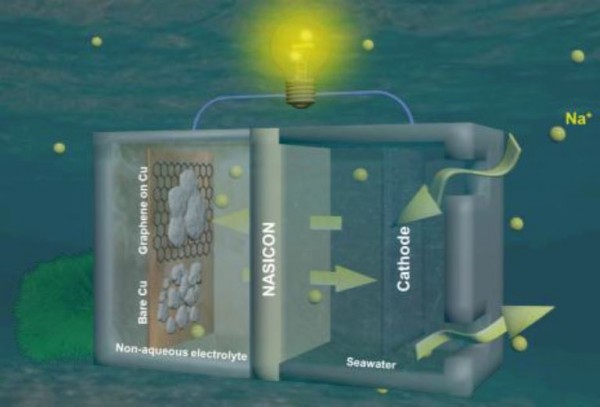Reliable Seawater Battery Anode: Controlled Sodium Nucleation via Deactivation of Current Collector Surface
- Journal
- J. Mater. Chem. A
- Vol
- 6
- Page
- 19672-19680
- Year
- 2018
Seawater battery, which consists of a Na metal anode and a seawater cathode, has highly attractive features because of eco-friendliness in use of seawater and cost-effectiveness in use of Na, the 6th most abundant element of the Earth’s crust. Here, we demonstrate a reliable Na metal anode for the seawater battery by covering the Cu current collector with graphene monolayer. The surface of chemically uniform graphene-coated current collector facilitates to control the nucleation rate of surfacial Na metal at the initial stage and enhances the Coulombic efficiency in current collector׀separator׀Na metal cells by lowering nucleation and plating potentials. Further deliberate modification of the graphene surface by using O2 plasma and thermal treatments supports the significance of homogeneity of the interface of the current collector. Problematically, heterogeneous Cu surfaces covering with islands of oxide layers significantly altered the surface morphology of plated Na metal and consequently resulted in the drop of the electrochemical performance due to the impeding effect on Na ion diffusion near the current collector surface. By successful implantation of the graphene-coated Cu current collector as an anode into seawater battery, battery performance has been drastically improved, which was confirmed by monitoring the discharge/charge performance and durability of LED lighting.

